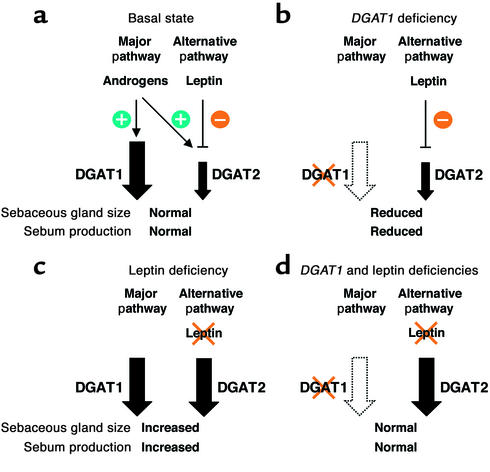Figure 9.
A model of how DGAT enzymes, leptin, and androgens modulate sebaceous gland biology. Our data suggest the existence of at least two pathways involved in maintaining normal morphology and functioning of sebaceous glands. (a) One of these pathways (presumably the major pathway) requires DGAT1, whereas the other pathway (the alternative pathway) may require DGAT2. Androgens stimulate the activity of both pathways, whereas leptin downregulates the activity of the alternative pathway. (b) In DGAT1 deficiency, only the alternative pathway is functional, resulting in sebaceous gland atrophy and decreased production of wax diesters. (c) With leptin deficiency, the activity of the alternative pathway is upregulated to levels comparable to those of the major pathway, leading to sebaceous gland hypertrophy and increased fur lipid production. (d) This upregulation of the alternative pathway can compensate for the loss of DGAT1, thereby accounting for the relatively normal sebaceous gland and fur lipid findings in Dgat–/–ob/ob mice.

